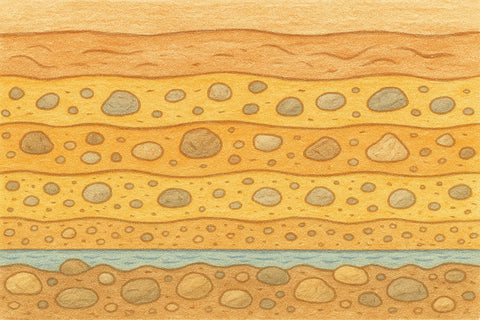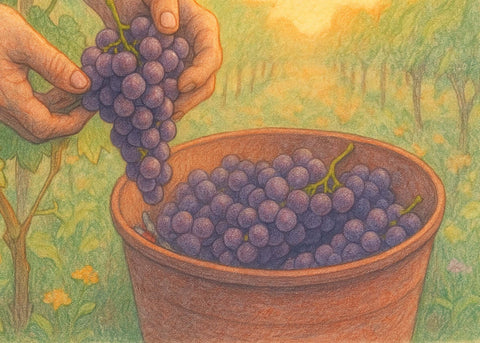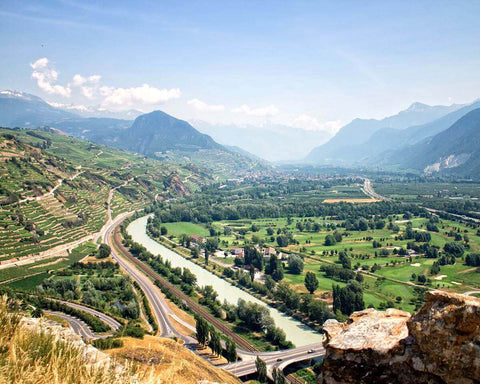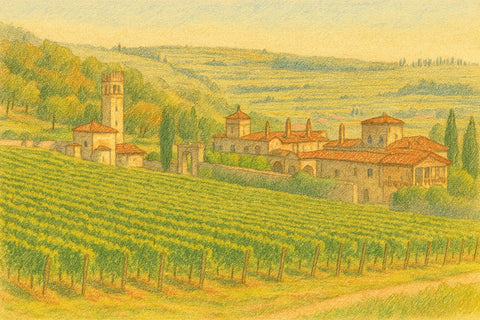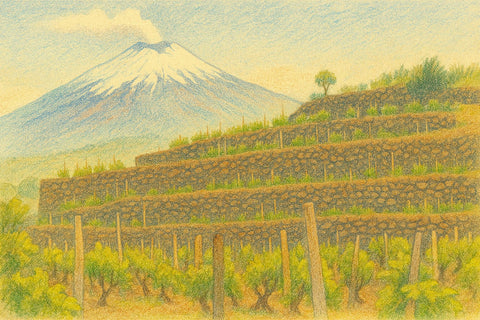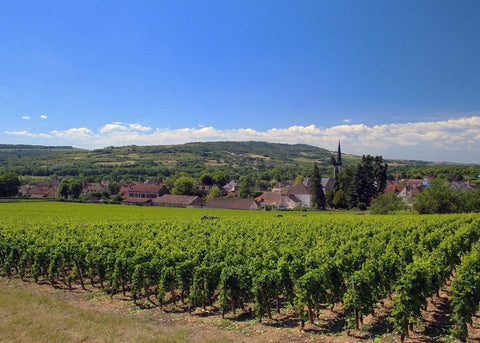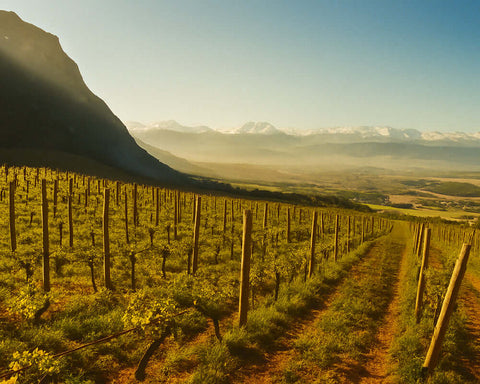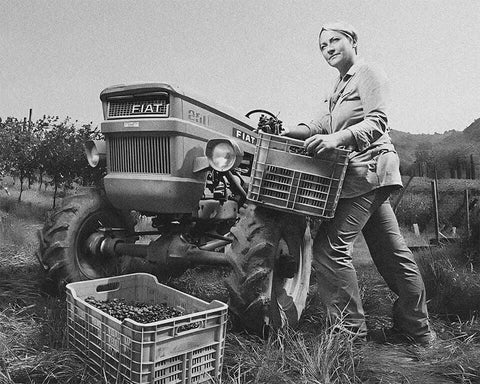Great wine starts underground. Soil texture, structure, minerals, microbes, and water dynamics govern vine vigor and berry chemistry—and, ultimately, a wine’s aroma, texture, and aging potential. From limestone and slate to basalt and loess, each soil writes a distinct physiological script for the vine. This guide explains the science, maps iconic regions to their soils, and shows how terroir choices echo in the cellar.
Soil Science 101 for Wine
Wine soils begin with parent material—limestone, granite, basalt, or schist—that weathers into mineral particles. Moving water, wind, glaciers, and volcanoes then sort and redeposit these particles as loess, alluvium, colluvium, or tephra. Texture, the relative share of sand, silt, and clay, sets drainage, warmth, and the reservoir of plant-available water. Structure describes how particles aggregate; good structure creates stable pores for aeration and steady infiltration, balancing drainage with retention.
Chemistry matters. Soil pH governs nutrient solubility and shapes microbial communities. Cation exchange capacity (CEC), typically higher in clays and organic matter, buffers the availability of potassium, magnesium, and calcium. Organic matter and the microbiome—humus, bacteria, and arbuscular mycorrhizal fungi—drive nutrient cycling, improve drought resilience, and influence root architecture through signaling in the rhizosphere. Thermal behavior completes the picture: dark, stony soils warm quickly and hasten ripening; pale, chalky profiles reflect light, slow heat accumulation, and help preserve acidity.
How Soil Shapes Vine Physiology & Berry Chemistry
Fertile, moist clays often push vegetative growth and higher yields, while lean, shallow or very free-draining profiles such as gravel or fractured slate naturally limit vigor and open the canopy. Water status is pivotal: a gentle, early-to-mid-season deficit concentrates anthocyanins and tannins and reduces berry size; severe stress arrests ripening. Nutrient supply modulates style. Potassium, abundant in many clayey, high-CEC soils, raises must pH and softens perceived acidity. Nitrogen (YAN) underpins yeast health; fruit grown on poor, rocky soils may require thoughtful nutrient management in the cellar. On high-pH calcareous sites, magnesium or iron can be less available, risking chlorosis unless rootstocks and foliar programs are matched to the site.
Acid balance reflects both climate and soil. Cooler, calcareous or high-elevation sites retain more malic acid, while warm, free-draining soils tend to yield lower titratable acidity and higher pH. Aroma precursors respond to the same levers: water and nutrient status influence terpenes in Muscat and Riesling, methoxypyrazines in the Cabernet family, norisoprenoids linked to age-worthy complexity, and sulfur-thiols in Sauvignon Blanc.
Common Wine Soils & Sensory Tendencies
Limestone, chalk, and marl (rich in CaCO₃) are cool, well-structured, and associated with line, length, and fine phenolics—think incisive acids in Chablis and Champagne or chalk-dust tannins in Tortonian Barolo.
Clay holds water and nutrients, building power and depth when kept in check; it shines in cooler or drier settings such as Pomerol’s clays or Serravallian marls of Barolo.
Sand warms and drains quickly, often yielding perfumed, lighter-tannin reds as seen in parts of Chianti Classico or Tokaj.
Gravel and rolled stones combine drainage with heat retention, ripening Cabernet tannins on the Médoc’s Garonne terraces and deepening fruit in Châteauneuf’s galets.
Slate and schist are shallow and heat-banking, channeling vertical acidity and a mineral line in the Mosel, Douro, and Priorat.
Granite, weathered to sandy, acidic soils, brings floral lift and fine-grained tannin to Beaujolais crus and pockets of the northern Rhône.
Basalt and other volcanics are porous and mineral-rich, often reading as salinity, spice, and tension in Etna, Soave, Santorini, and the Canaries.
Loess (wind-blown silt) promotes deep rooting and supple textures in Austria’s Wachau and Kamptal and parts of the Willamette.
Alluvium and colluvium are mosaics whose style depends on depth, stone load, and drainage—typical of Napa’s valley floors and fans.
Regions & Soil Formation: Case Studies
Chablis (France): Jurassic Kimmeridgian limestone and marl, studded with fossil oysters, create cool, reflective soils that preserve razor-edged acids, flinty tones, and long aging curves.
Champagne: Cretaceous chalk offers high porosity and capillary lift, pairing drainage with water buffering; deep belemnite chalk promotes linear acids and delicate phenolics.
Bordeaux: The Left Bank’s warm gravel terraces ripen Cabernet to structured, dark-fruited profiles, while Right Bank clay and limestone deliver plush, fresh Merlot in Pomerol and Fronsac.
Barolo (Italy): Tortonian marls in La Morra and Barolo favor perfume and finesse; Serravallian sandstones in Serralunga and Monforte yield stature, grip, and longevity.
Beaujolais crus: Decomposed granite and thin topsoils frame high-toned, floral Gamay with fine tannin, from Fleurie’s silk to Moulin-à-Vent’s structure.
Mosel (Germany): Devonian slate on precipitous slopes stores heat yet starves vigor, producing featherweight Rieslings with soaring acidity and slate smoke.
Priorat (Spain): Llicorella—crumbled slate with quartz—encourages low vigor and concentration in Garnacha and Carinyena.
Etna (Italy): Stratified basaltic sands and lava flows of varying ages, layered with altitude, shape Nerello Mascalese and Carricante into saline, spicy, high-tension wines.
Soave (Italy): Basalt neighbors limestone; basalt sites read citrus-saline and almond-toned, while limestone leans to broader stone-fruit.
Napa Valley (USA): Alluvial fans, volcanic hills, and marine sediments form a patchwork; success hinges on rootstock and site matching.
Willamette Valley (USA): Basaltic Jory, marine Willakenzie, and Laurelwood loess render distinct Pinot Noir textures and spice.
Santorini (Greece): Pumice, tuff, and ash—with extreme drainage and salinity—forge bone-dry, low-pH Assyrtiko with epic aging potential.
From Soil to Cellar: Winemaking Decisions
Soil-driven fruit chemistry steers the cellar. High potassium uptake, common on clays, raises must pH and reduces the efficacy of molecular SO₂; winemakers respond with tailored additions and careful oxygen management. Calcareous or cool sites deliver high natural acidity, so choices around malolactic timing, lees contact, and selective deacidification become pivotal. Low-YAN fruit from rocky, low-organic-matter soils benefits from precise nutrition to avoid sluggish ferments and hydrogen sulfide.
Water-limited sites produce smaller berries with higher skin-to-juice ratios; gentle extraction and temperature control help keep tannins fine. Linear, soil-expressive wines often mature best in neutral vessels—large casks, concrete, or amphora—so the mineral line remains audible. Filtration, cold stability, and controlled oxygen exposure are calibrated to the acid–tannin framework set in the vineyard.
Curious about low-additive approaches? See low-sulfites wine, organic wine, and biodynamic wine. For examples across terroirs, browse our best-sellers.
Farming for Soil Health
Healthy soils are managed, not mined. Diverse cover crops add organic matter, improve infiltration, feed mycorrhizae, and temper vigor. Minimal tillage and composts protect aggregation and carbon while reducing erosion—vital on slopes where terraces, mulches, and hedgerows also stabilize thin or stony profiles. Rootstocks and planting density are matched to pH, vigor potential, salinity, drought risk, and disease pressure to keep canopy and crop in harmony. Where irrigation is permitted, regulated deficit favors phenolic maturity without halting photosynthesis.
Quick FAQ
Do soils “flavor” wine? Not directly. Vines don’t transport flavor minerals into berries; soils change water, temperature, and nutrition, which alter vine metabolism and berry composition—perceived as minerality, tension, or texture.
Which soil is “best”? It depends. Climate, variety, rootstock, and farming interact. The best soils balance water and nutrients so fruit ripens at moderate yields with composure.
Why does pH matter? Must and wine pH govern microbial stability, SO₂ effectiveness, color stability in reds, and perceived freshness—strongly influenced by soil-driven potassium uptake and site temperature.

